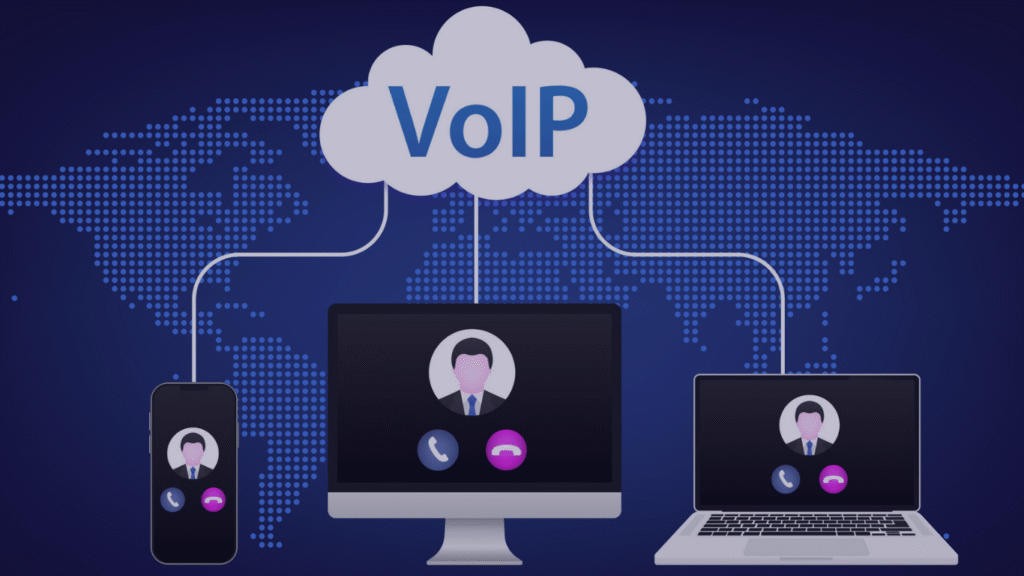Office Call Management: Best Practices for a Professional and Efficient Workplace
09/02/2025
Why Office Call Management Matters
For many businesses, the office phone is more than just a tool, it’s the front door to your company. Every call represents an opportunity to create trust, answer questions, or resolve issues. How you manage those calls speaks volumes about your professionalism and respect for a customer’s time.
When call management is done well, it:
- Improves customer satisfaction
- Strengthens your brand image
- Boosts efficiency for your staff
- Reduces stress during high-volume call periods
But when it’s neglected, it can cause long hold times, missed calls, and frustrated customers who may never call back.
That’s why office call management must be a top priority. From call routing to voicemail systems, training, and technology, the right strategies can transform the caller experience.

Why Call Management Drives Customer Satisfaction
At the end of the day, call management isn’t just about keeping your office organized — it’s about how customers feel when they interact with your business. Every second a caller spends waiting or being transferred shapes their perception of your professionalism.
Here’s why strong call management improves customer satisfaction:
- Respect for time – Shorter hold times and clear communication show callers their time is valued.
- Reduced frustration – Efficient call routing prevents customers from being bounced around the office.
- Professional image – Friendly greetings, well-trained staff, and smooth call handling build trust.
- Consistency – Customers know what to expect, whether they call once or twenty times.
- Confidence in service – When calls are handled well, it reassures customers they’ll be taken care of in other areas too.
Case Study: Insurance Office
An insurance office implemented structured call management, training staff on empathetic greetings and updating hold messages with policy reminders. Within three months, customer survey scores around “ease of reaching us” rose by 32%. Clients felt reassured and better cared for, leading to higher retention rates.
Real-World Impact: Call Transfers, Holds, and Customer Satisfaction
** Research from SQM Group** reveals a clear connection between call handling practices and customer experience. The findings show that:
- When customers are placed on hold, their overall satisfaction (CSAT) drops by 15%, and first-call resolution (FCR) drops by 19%.
- Being transferred between agents further lowers satisfaction—CSAT decreases by 12%, and FCR drops by 14%, especially when transfers are made without context (“cold transfers”) rather than smoothly (“warm transfers”)
These statistics make it abundantly clear — poor call handling, including needless holds or transfers, directly erode caller trust and satisfaction.
Takeaway: Happy callers become loyal customers — and call management is at the heart of that satisfaction.

How Call Management Shapes Brand Image
Every phone call is a reflection of your brand. From the moment a caller dials your number, the way their call is answered, routed, placed on hold, or transferred communicates what kind of business you are.
A poorly managed call, long waits, confusion, unprofessional greetings, creates a negative impression, even if your actual services are excellent. On the other hand, smooth, professional call handling strengthens your reputation and makes customers feel confident in choosing you.
How call management supports a strong brand image:
- Professionalism – Clear greetings, efficient routing, and polite communication show your business is organized and reliable.
- Consistency – A well-trained team ensures every caller has the same high-quality experience, no matter when they call.
- Trust – Respecting a customer’s time builds confidence that you’ll deliver on your promises elsewhere.
- Differentiation – In industries where competitors may neglect call handling, a polished system sets you apart.
Example: A boutique financial services firm introduced professional voicemail greetings, streamlined their call tree, and added branded on-hold messages. Clients commented that the experience “felt more trustworthy” and aligned with the premium image the firm wanted to project.
Takeaway: Every phone call is an extension of your brand. Consistent, professional call management makes your business stand out for the right reasons.
Real Brand Impact: First Direct (HSBC Subsidiary)
First Direct, a phone-and-internet-only arm of HSBC, has become a benchmark for superb customer service, especially in an era where phone support standards are slipping across industries. Here’s what sets them apart:
- Despite the decline of traditional customer service, First Direct handles around 14,000 calls per day with a remarkably fast average response time of just 39 seconds—a sharp contrast to the UK finance industry average of 8 minutes and 27 seconds.
- They invest heavily in training: new staff undergo six weeks of hands-on training before interacting with customers. Even the CEO takes customer calls periodically to stay connected to service standards and culture.
- This commitment pays off: First Direct consistently ranks at the top in customer experience indices, earning recognition for service excellence and maintaining a brand image of reliability, empathy, and trust.

Let’s Break It Down | Call Management
1. Call Routing and Call Trees
A well-structured call tree (also known as an auto attendant) ensures calls reach the right person the first time. Without one, calls bounce around the office, wasting both staff and customer time.
Best practices for call trees:
- Keep it simple – Limit menu options to what’s absolutely necessary.
- Use clear language – Avoid jargon; make choices obvious.
- Prioritize efficiency – Route calls directly to the right person or department.
Case Study: Accounting Firm
During tax season, one accounting firm’s phones were overwhelmed. They implemented a call tree with dedicated options for tax filing, payroll inquiries, and general questions. Hold times dropped by half, and clients appreciated not being transferred multiple times.
Takeaway: A thoughtful call tree saves time for both staff and callers.
2. Managing Calls on Hold
Hold time is often unavoidable, but how it’s handled determines whether callers stay patient or hang up.
Best practices for managing holds:
- Always explain why the caller is being placed on hold.
- Give an estimated wait time if possible.
- Check back in periodically if the hold is long.
- Use professional on-hold messages or music instead of silence.
Case Study: Medical Clinic
A busy clinic struggled with complaints about long holds. They added on-hold messages explaining peak call times and promoting their online booking system. Patient complaints decreased, and online bookings rose by 20%.
Takeaway: Even small communication improvements make hold time feel shorter and more respectful.

3. Voicemail Systems That Work
Voicemail is often overlooked in office call management, but it’s critical for when no one is available.
Best practices for voicemail:
- Use a professional greeting that reflects your brand.
- Set clear expectations for response times.
- Routinely check and return messages.
- Keep voicemail boxes from filling up.
Case Study: Law Office
Clients of a law firm complained that leaving voicemails felt like shouting into the void. The firm updated their voicemail greeting to promise return calls within 24 hours — and they made good on it. Within a month, client satisfaction ratings for “communication” improved by 25%.
Takeaway: Voicemail should reassure, not frustrate.
4. Staff Training and Phone Etiquette
Even the best systems will fail without well-trained staff. Phone etiquette is a skill and one that can make or break a caller’s impression.
Training should cover:
- How to greet callers warmly and professionally
- Proper use of the hold button
- Techniques for active listening
- Clear communication about next steps
- Managing difficult or frustrated callers calmly
Case Study: Law Firm
One law office invested in empathy and active-listening training for its paralegals and assistants. As a result, even when clients had to wait for an attorney, they felt heard and respected.
Takeaway: Professionalism on the phone builds trust in your entire organization.

5. Technology and Automation
Modern technology can take office call management to the next level.
Tools to consider:
- Call routing software – Directs calls to available staff quickly.
- Analytics – Tracks call volume, hold times, and missed calls.
- Automation – Provides answers to simple FAQs without staff intervention.
Case Study: Dental Office
A dental practice discovered that their phones lit up during lunch breaks. By analyzing call data, they adjusted staff schedules so someone always covered phones at that time. Hold times dropped by 30%, and patient complaints decreased.
Takeaway: Technology isn’t just about convenience, it helps you align staff resources with real-world call patterns.
6. Communicating with Callers
The biggest mistake offices make is leaving callers in the dark. Communication is at the heart of great call management.
Tips for better communication:
- Always explain before placing someone on hold.
- If possible, give an estimated hold or callback time.
- Express gratitude for patience when returning to the line.
- Offer alternatives (like voicemail or email) if the wait will be long.
Case Study: Tech Support Line
A tech company implemented a simple change: staff began offering callers the option of a callback instead of holding. Call abandonment rates fell by 35%, and customer satisfaction rose.
Takeaway: Options + communication = trust.
7. Monitoring, Feedback, and Continuous Improvement
Call management isn’t “set it and forget it.” Businesses evolve, customer expectations change, and your system must keep up.
Ways to improve continuously:
- Monitor call metrics (hold time, missed calls, dropped calls).
- Collect customer feedback through surveys or follow-ups.
- Ask staff for input on bottlenecks or recurring issues.
- Update call trees, scripts, and on-hold messages regularly.
Case Study: Tech Company
A software company reviewed call recordings quarterly and discovered customers were confused by overly technical menu options. By simplifying the language, they reduced misrouted calls by 20%.
Takeaway: Regular reviews prevent small issues from becoming big frustrations.

Benefits of Strong Office Call Management
When done well, office call management delivers real results:
- Reduced hold times – Happier callers, fewer hang-ups.
- Better customer satisfaction – Clients feel respected and valued.
- Higher staff productivity – Less wasted time on misdirected calls.
- Improved brand reputation – Professional interactions every time.
- Increased loyalty and retention – Customers who feel heard stay longer.
Building a Professional Caller Experience
Office call management isn’t just about answering phones — it’s about creating a system that respects callers’ time, empowers staff, and reflects your company’s professionalism.
By focusing on call routing, on-hold strategies, voicemail, training, technology, and continuous improvement, you can transform the way your office communicates.
When every call counts, these best practices help you stand out, keep customers happy, and build long-term success.
Curious about how COHM can elevate yourbusiness? Don’t hesitate to reach out to us today. We prioritize prompt customer service and guarantee a response within 24 hours.
Ready to Collaborate?
"*" indicates required fields